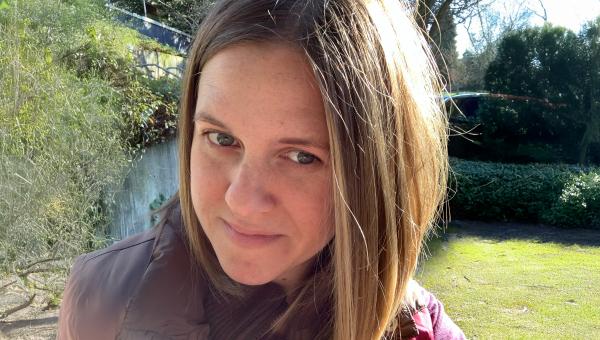
From Quick Fixes to Lasting Impact: Metropolitan Jewish Health System's Website Strategy (Part 1)

Metropolitan Jewish Health System (MJHS) is one of the largest not-for-profit health systems in the New York City area. From rehabilitation to home care to hospice to palliative care, MJHS serves patients, caregivers and healthcare professionals from the surrounding community.
MJHS serves its members and users through several organizations that provide valuable information throughout the continuum of care. They include:
- mjhs.org: The primary website of the MJHS brand, which provides access to many health services.
- elderplan.org: A not-for-profit health plan dedicated to ensuring members get the benefits they need and deserve.
- mjhsfoundation.org: The charitable foundation that supports and raises funds for MJHS to ensure the health network can continue doing its great work.
From the beginning of our multi-year relationship, our objectives have remained the same: to enhance, strengthen and support their WordPress website ecosystem while helping achieve their strategic digital marketing, UX and website goals:
- inform users of the breadth of services they have to offer
- create a seamless user experience across all their digital properties
- showcase their best-in-class care
- guide users through that care process with great UX
- demonstrate their high-touch customer service
- reflect their position as a trusted leader within their community
- emphasize MJHS’ commitment to diversity and inclusion
Getting Started With Intention
To be in a position to effect change, we began with a code audit and review to get a baseline of the existing codebase of all three websites and understand the subtle nuances and commonalities across all the sites.
We also conducted a UX and accessibility review to identify and prioritize immediate improvements on the websites and create our development backlog.
This work was conducted quickly since Medicare’s Annual Enrollment Period (AEP) was fast approaching. Identifying “quick wins” along with the timely needs of AEP, our team focused on implementing updates as a first step and then tackled more significant updates post-AEP.
Our Quick Wins Approach
Strategically, we focused on implementing as many high-impact items as possible utilizing insights from our UX review to guide our priorities ahead of this critical enrollment period.
Prioritized UX updates included:
- Creating menu active states
- Adding breadcrumbs on all pages
- Increasing the standardization of page layouts
- Implemented an updated website design for the new Elderplan Plans
- Updating all call-to-action text to be more descriptive and clear
- Breaking up blocks of content for better scannability
Several WCAG 2.2 AA+ accessibility improvements included:
- Increasing color contrast for increased legibility
- Defining button action styles that did not rely just on color
- Adding descriptive alt text to all images and graphics
- Differentiating links and text styles for better engagement
- Incorporating identifiers for PDF file type and size
Preparing for a Successful AEP Launch
To help make AEP as successful as possible, our team proactively cataloged content and processes. This approach helped track the content, streamline internal and legal reviews, and ensure the accuracy of the site. It helped both teams be nimble especially when there are last-minute content updates needed for AEP requirements.
Our team used the existing backend process to make the AEP updates due to the quick timeline. This helped us identify what was working, what could be modified, and what improvements were needed going forward.
Since our punch list of to-dos and content needs were highly focused and very specific, all the updates were launched successfully ahead of AEP, which had an immovable launch date.
Creating a Path for Greater Impact
Anything we couldn’t tackle as a “quick win” formed our roadmap for the future of the MJHS ecosystem.
To help inform this roadmap, our team met with all of MJHS's partners to understand and align the different marketing and strategic initiatives. Our collaborative partner meeting allowed all teams to align on overarching goals and define each partner's role to best support MJHS.
From the partner meeting, we captured the need for:
- Usability Studies: We conducted two usability studies on the Elderplan website to identify areas of friction and prioritize improvements specifically in the areas of information architecture, navigation and labeling, and accessibility, driving towards a more usable experience.
- Streamlining Pagebuilding: Given the large volume of PDFs across their site, our goal was to make updating PDFs and site content as easy as possible, which meant giving them a more modern WordPress page builder (Gutenberg).
- Translation Support: Particularly on the Elderplan site, the need for translation support was paramount. Through our translation workflow, we sought to streamline finding, uploading, and linking the right PDF in the right language for user access. We also wanted to store all language variations in one place, within the content management system. This move helped more of the partners be able to make content updates to increase efficiencies.
MJHS has been an incredibly collaborative partner from the start. Our iterative approach allowed us to prioritize quick wins with their most important time of year–the Annual Enrollment Period–ensuring their needs were being met while also diving into meatier work driven by usability studies with MJHS patients and members.
If you’re ready to improve the ecosystem of your healthcare websites or want to find out how an incremental approach can work for your organization, get in touch!
And stay tuned for Part Two of our series on MJHS, where we’ll talk about our user-centered approach to an accessible and highly usable patient experience.




